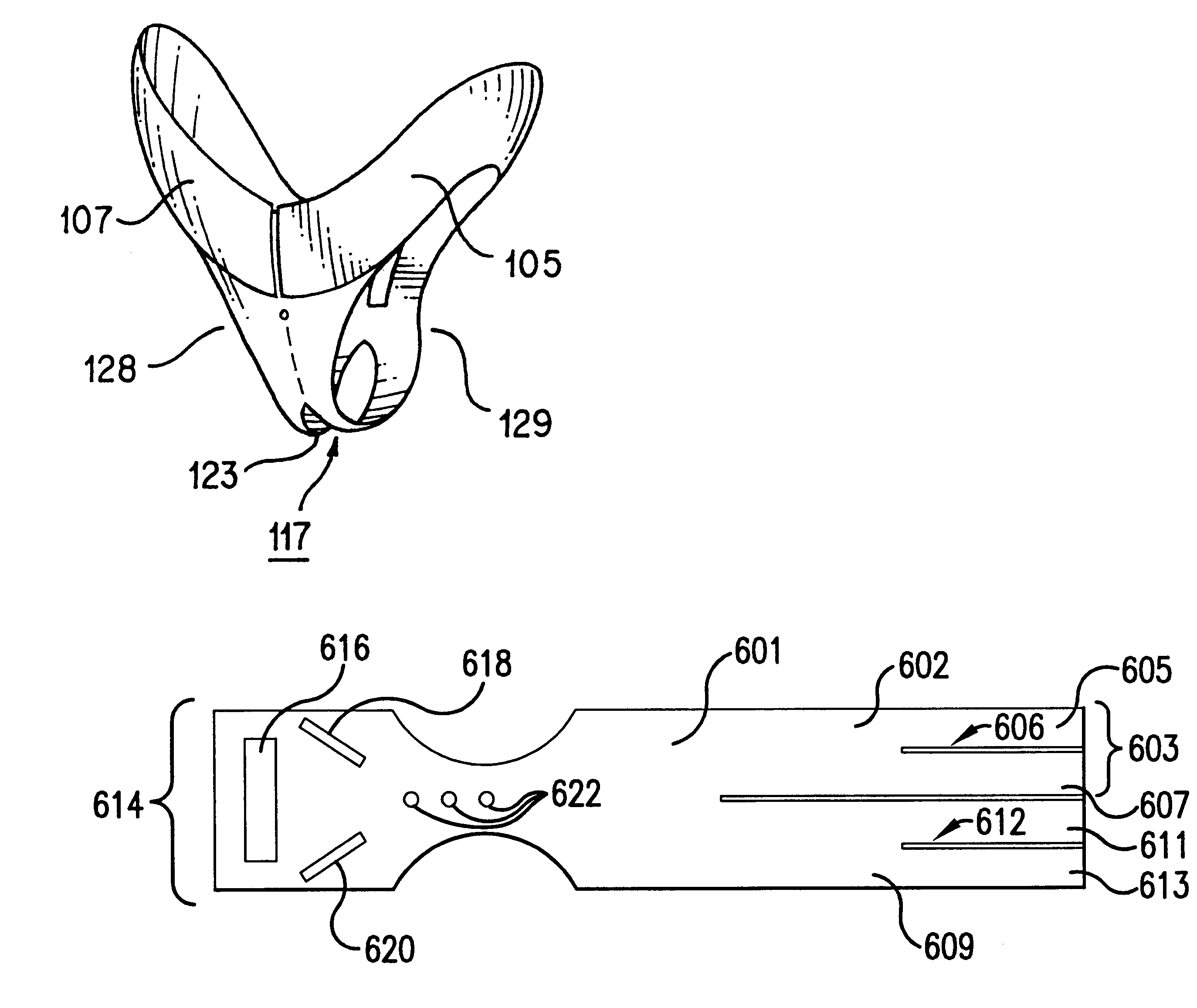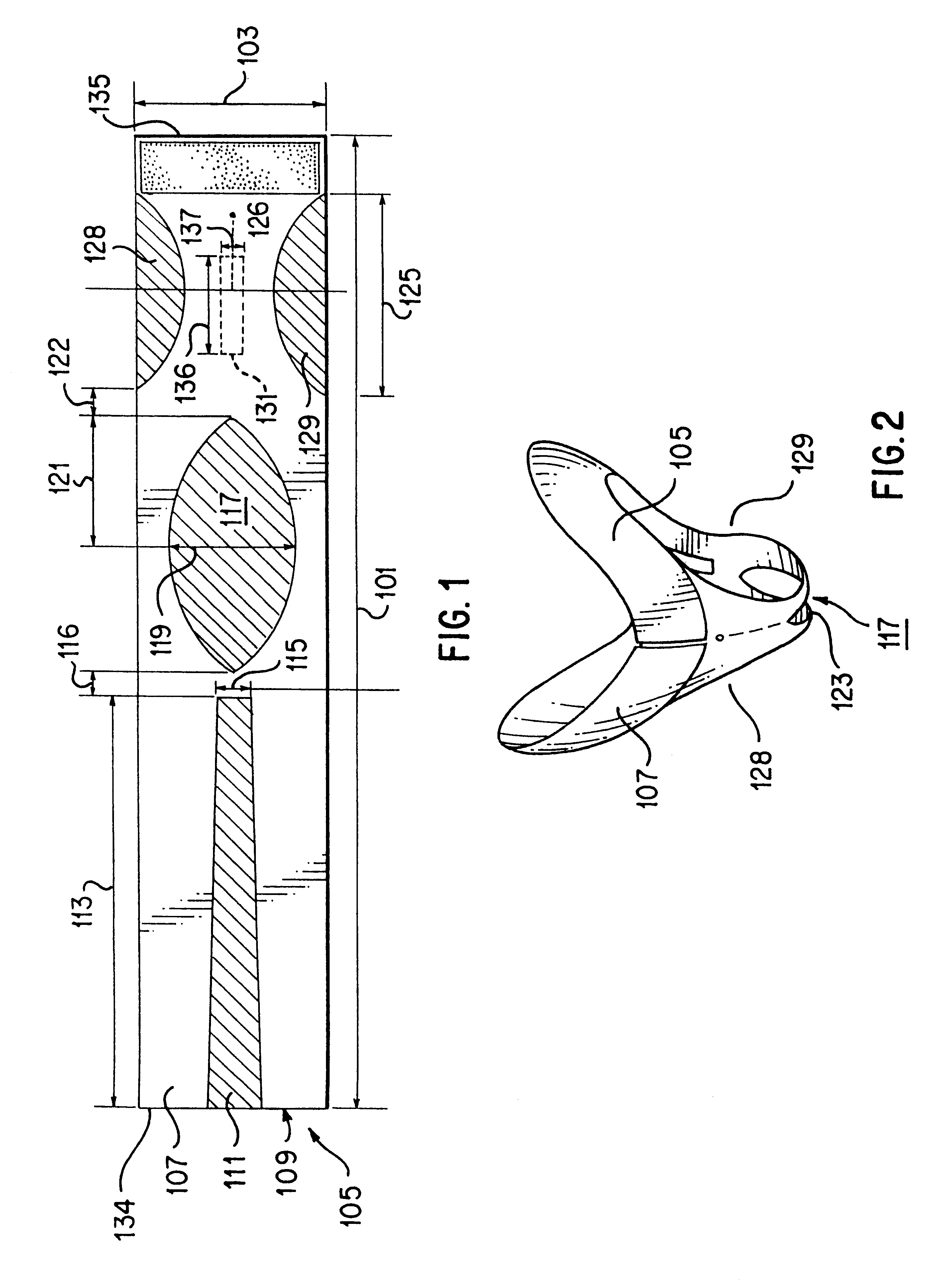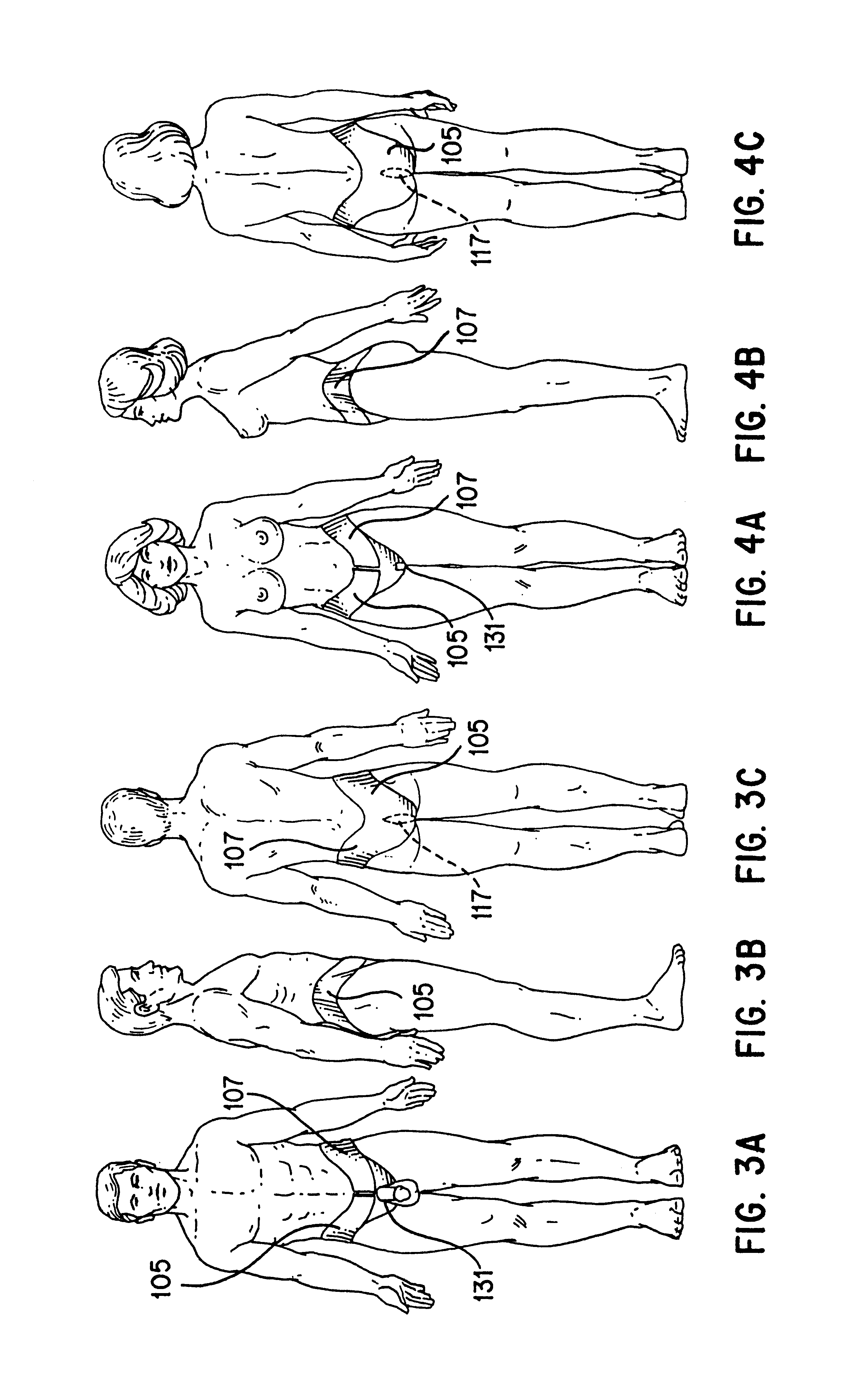Abdominal postoperative binder and method of use
a post-operative and binder technology, applied in the field of post-operative support binder, can solve the problems of difficult wound healing, insufficient elastic force to control edema, and prior art problems
- Summary
- Abstract
- Description
- Claims
- Application Information
AI Technical Summary
Benefits of technology
Problems solved by technology
Method used
Image
Examples
Embodiment Construction
In FIG. 1, a generally rectangular sheet of relatively inelastic material, such as commercial Neoprene.RTM., has a length 101 and a width 103 which are chosen to be generally fitting to the majority of patients. The structure of the binder taught by the present invention is defined by cutting this rectangular sheet to fit the patient, as will be further discussed below.
At a tail end 109 of the sheet a rectangular tapering cutout 111 is made that defines a first leg or tail 105 and a second leg or tail 107. This cut has a tapering width 115 and a length 113, as shown in FIG. 1.
An uncut length 116 of the sheet separates rectangular cut out 111 from a football shaped cut out 117, which has a minor axis 119 and a major semi axis 121. This football shaped cut out section is separated by uncut section 122 from two curve shaped side cut outs 128 and 129 positioned on the left and right edges of the sheet, respectively, which are opposite one another on the sheet. These cut outs 128 and 129...
PUM
 Login to View More
Login to View More Abstract
Description
Claims
Application Information
 Login to View More
Login to View More - R&D
- Intellectual Property
- Life Sciences
- Materials
- Tech Scout
- Unparalleled Data Quality
- Higher Quality Content
- 60% Fewer Hallucinations
Browse by: Latest US Patents, China's latest patents, Technical Efficacy Thesaurus, Application Domain, Technology Topic, Popular Technical Reports.
© 2025 PatSnap. All rights reserved.Legal|Privacy policy|Modern Slavery Act Transparency Statement|Sitemap|About US| Contact US: help@patsnap.com



